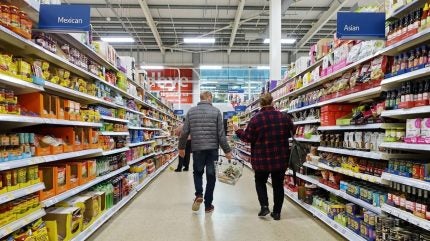
UK food inflation decelerated to 13.4% in July from 14.6% in June, according to figures quoted by industry body the British Retail Consortium (BRC).
But the BRC has warned there could be further hurdles before consumers see a meaningful reduction in the price of their weekly grocery shop.
CEO Helen Dickinson said: “These figures give cause for optimism but further supply chain issues may add to input costs for retailers in the months ahead. Russia’s withdrawal from the Black Sea Grain Initiative and subsequent targeting of Ukrainian grain facilities, as well as rice export restrictions from India, are dark clouds on the horizon.”
She added: “We expect some global commodity prices to rise again as a result, and food prices will be slower to fall.”
Dickinson called on the UK government to freeze business rates from next April, or else “risk adding a £400m ($512.9m) additional pressure on prices”.
July’s inflation figure is the third consecutive deceleration in the food category, with the rate now at its lowest level since December 2022.
Fresh food inflation slowed further in July, to 14.3% from 15.7% in June, while ambient food inflation decelerated to 12.3% from 13%.
Dickinson highlighted falling prices across key staples such as oils, fats, fish and breakfast cereals.
Wider shop-price inflation cooled to 7.6% in July, from 8.4% in June.
Last month, Karen Betts, the CEO of the UK industry body the Food and Drink Federation, highlighted the plight manufacturers are still up against, particularly in terms of ingredients costs.
“Food and drink manufacturers’ costs remain 33% higher than they were three years ago,” she said in a statement at the time.



